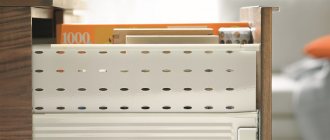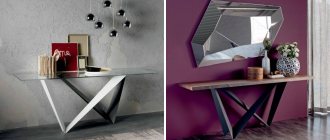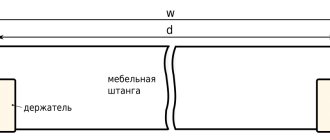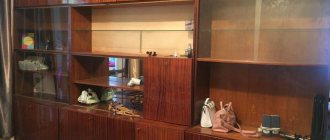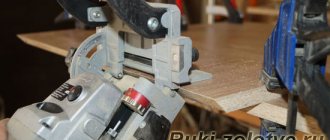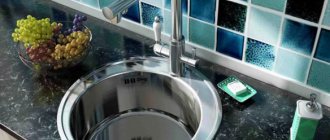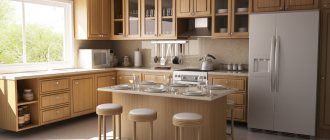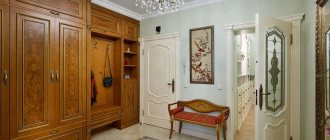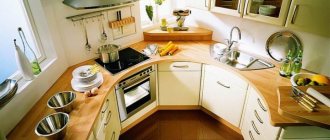Old-style hinges can be seen in headsets produced 20-30 years ago. These designs are reliable, easy to use, wear-resistant, unlike modern complex models. But everything has its own service life, so sooner or later, the sashes begin to sag and the hinge elements begin to function poorly. Is it possible to adjust or replace this type of hinge, let's consider in detail.
Kinds
Today, the supporting fastening mechanism for modern furniture is manufactured in a huge range. A variety of furniture hinges, their versatility makes it possible to enjoy using kitchen sets, bedside tables, and easily close and open drawers, cabinets, and doors. Furniture hinges are divided into types according to their purpose, design features, and installation:
- invoices;
- semi-overhead;
- internal;
- corner;
- inverse;
- piano;
- card;
- mezzanine;
- secretory;
- gallery;
- card;
- pendulum;
- heel
Overhead and semi-invoice
Classic locking mechanisms are used for furniture, entrance, and interior doors. It has different shapes, sizes, and can withstand loads well. They ensure free opening and closing of the cabinet door at an angle of 90, support the doors at the required level, and prevent distortion. The hinges on the cabinet are attached with the main part to the side inner wall of the furniture.
Furniture holders differ from overhead holders in the bend of the base. The mechanism is fixed when it is necessary to mount two doors at once on one of the side doors, opening in different directions. Typically, such hinges are used for kitchen sets.
Semi-overhead
Semi-overhead and slip-on
Semi-overhead
Invoices
Invoices
Internal and corner
Furniture fittings have a general resemblance to a semi-overlay hinge, but with a deeper bend, mounted inside the body of the product, ideal for wooden cabinet doors and heavy cabinet doors. The mechanisms are attached at different angles to furniture doors, are widely used for corner cabinets, and have different configurations depending on the intersection of the installation planes. Corner hinges are produced for installation at an angle of 30°, 45°, 90°, 135°, 175°. They may have built-in or separate closers that allow the door to open smoothly.
Corner
Corner
Corner
Domestic
Domestic
Inverse and piano
Connection for furniture with a rotation angle of 180, widely used for the doors of built-in bedside tables and cabinets. The hinge securely connects the side post and the door, forming a straight line.
The connecting holder consists of two perforated plates, movably fastened to each other. Despite the fact that the furniture hinge is considered an outdated option, it is installed on swinging facades and in other products.
Piano hinges
Piano
Piano
Inverse
Inverse
Card
The design of the hinge for connecting furniture elements is similar to a piano mount. The fittings, consisting of two parallel plates connected by a hinge, are attached to the facade and frame through holes located along the edges. The mechanism comes in different sizes and is mainly used for retro furniture design and jewelry boxes.
Mezzanines and secretaries
The hinge is similar to an overhead fastener and is installed on the doors of kitchen wall cabinets. Fixed for vertical opening. Its main element is the spring.
Furniture hinges are designed for small desks with folding boards and front walls of cabinet furniture. A special feature of the mechanism is double adjustment, the presence of a secretory bracket, and convenient standard milling of holes with a diameter of 35 mm.
Secretaries
Secretaries
Secretaries
Mezzanine
Mezzanine
Gallery and card shops
The hinge, by its design, is considered the most popular fastener when it is necessary to connect a facade to a false panel at an angle of 90°. The fittings allow doors of any size or shape to close easily and silently.
A furniture holder designed for folding fronts is most often used in the production of kitchen tables. It is fixed at the ends of the connecting parts of the structure, which allows you to open the door 180 degrees.
Adit
Adit
Card
Card
Pendulum and heel
The main feature of the fastening is the ability to open the structure in different directions. The mechanism, being a type of door hardware, ensures that doors open 180 degrees. The loop has a highly specialized application; during installation, it requires correct and precise adherence to the instructions.
A simple type of hinge is mounted in the top and bottom corners of the box, secured using small cylindrical rods. The mechanism operates on the principle of hinged canopies. They are used in the manufacture of kitchen cabinets with light-weight doors for small spaces. The installation of hinges on glass facades is being considered.
Heel
Heel
Pendulum Pendulum
Pendulum
What are old style furniture hinges?
This is a mechanism consisting of a body and two levers, each of which is firmly attached to the hinge body on one side, and the other holds the hinge cup, which is installed in a special round recess on the inside of the sash.
The mechanism has two main locking positions: perpendicular and parallel arrangement of the cup relative to the body. The main difference between old-style furniture hinges is that their design provides protection only in 2 extreme positions of the transition ones.
Initially, the hinge had 2 spiral springs, which ensured a tight fit of the sash to the body. A little later, this model was improved - the springs became compact, with a flat section.
The design features of these mechanisms allow you to adjust the door leaves. The “frog” loop has three main elements:
- The cup is a round, often hinged, located in a pre-drilled recess on the inside of the door, which is equipped with a special Forsner drill. The usual hole diameter is equal to the standard element size - 35 mm;
- Shoulder – a lever connecting the strike plate and the cup;
- counter (mounting) strip - contains adjusting screws and is attached to the inside of the cabinet wall on which the sash is supposed to be hung.
When and where were they used?
In the first half of the twentieth century, when mass production of particleboard furniture began, on which it was impossible to install card hinges, the Italian designer Arturo Salice invented four-hinge hinges. The company that produces this fittings is named after him – it continues to operate to this day.
The hinges are stamped from durable sheet metal. Galvanic coating guarantees not only reliable protection against corrosion, but also an aesthetic appearance.
These designs were first used in cabinets and wardrobes, which began to be produced from innovative particle board materials at that time. Due to their softness, they simply could not withstand card loops.
How to regulate them?
What needs to be done to adjust the old style hinges?
The first step is to make sure that the valves are seated correctly; deviations are corrected using a screwdriver:
- The screw closest to the sash on the hinge arm will move the sash left/right.
- Far, presses or releases the door relative to the cabinet body.
- The screw located on the crosspiece of the strike plate at the bottom adjusts the façade vertically.
To quickly find the correct position of the sash, the screws should be turned evenly, with a small amplitude - this will help to optimally distribute the load.
Manufacturing materials
An important requirement for all furniture fittings is their compliance with safety standards. Simple auxiliary products, providing movable movement of furniture parts, are manufactured using special technology using various materials. When making connecting fasteners, the manufacturer takes into account the types and significance of furniture products, and based on this, the required fastening is selected.
When choosing hinges, it is necessary to take into account their basic characteristics: the quality of the material, their functionality, versatility, and the appearance of the model. The most popular and in demand are connecting mechanisms made of brass and steel. They are considered the most reliable, durable, do not corrode, have good glide, and do not deform.
An important point in the versatility and quality of the product is simple installation and the ability to adjust furniture hinges. Modern fastening structures allow you to adjust the facade along the vertical, horizontal and depth planes. Various types of settings are presented in the video.
Steel
Brass
Installation and adjustment
To correctly install furniture fittings, no special knowledge is required, the main thing is to follow the rules and recommendations included when purchasing the product. Before starting work, you need to familiarize yourself with the structure of the holder, its advantages and capabilities. Before installing furniture hinges yourself, you need to choose a rational approach to work, this is:
- prepare the necessary tools;
- make markings;
- drill the necessary holes;
- install the loop and adjust.
Before installing hinges, it is necessary to take into account the features of the process. When making markings, adhere to precise distances so that after installing the loops, they do not come into contact. Furniture fastening elements must be on the same axis. To do this, use a building level for leveling.
When making the depth of the holes, it is necessary to take into account the thickness of the material from which the furniture is made.
The final stage of installation is adjusting the fittings. The adjustment procedure requires a responsible attitude because how correctly the adjustment is carried out depends on the functionality of the furniture. One of the ways to adjust this in depth is to press or weaken the facade to the body. By tightening the oval holes, you can tighten the facade as it sagging. Lateral adjustment helps to avoid cracks and gaps between the facade and the frame.
Tools
Marking
Drilling holes
Installation
What are the stages involved in installing furniture hinges?
Many novice craftsmen are puzzled by the question of how to properly install hinges. Therefore, in order to avoid making any mistakes, you need to know the sequence of installation work:
- Marking installation locations for furniture hinges. As you know, a furniture hinge includes a bowl and a strip, which are mounted on the facade and on the frame itself. That is why the markings should be left on both of these parts. It is important to measure the distance required for the hinges and calculate the exact position of the planks.
- The next step will be to create a hole for installing the cup. This can be done using a drill of the required size.
- Door installation.
- Hinge adjustment in all directions.
Do not screw the hinges by eye, without markings
Video - Marking furniture hinges
Installation of furniture hinges
It is worth noting that installing furniture hinges is a simple process that even a beginner can do. In this matter, it is necessary to follow a certain algorithm, then the occurrence of any problems is practically eliminated.
During the work you will need the following:
- a screwdriver or electric drill (it is advisable to take a drill with a large number of interchangeable attachments);
- drill-mill (usually its diameter is 25-35 millimeters, it depends directly on the size of the cup);
- a simple pencil;
- measuring tape;
- screwdriver;
- awl;
- self-tapping screws
Assembly tools
When carrying out any furniture assembly, you must have a manual set of tools, an electric drill. The very first necessary device is a tape measure. For accurate markings, you will need a medium-hard pencil. Hexagon for single-element tie connection of parts. A screwdriver is an indispensable tool for drilling and screwing.
You can set a clear line at an angle using a square. An item that is very helpful when assembling furniture is a slanting knife. The immediate tool for installing fittings is a special drill for furniture hinges. Now, knowing the types and purposes of furniture hinges, as well as how to adjust furniture hinges, you will not have problems with selection and installation.
What are furniture hinges?
Furniture hinges are mechanisms that are attached to the front part of the door and the wall, thanks to which they allow you to open and close the door. They all perform different functions - there are the simplest hinges that only hold the door, there are variations with a closer or a “soft closing” effect, without knocking.
Today, four-hinged furniture hinges are mainly used to install doors - such designs are easy to install and can serve for many years without any problems, even with frequent use of the furniture. The mechanism consists of the following elements:
